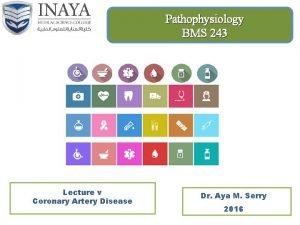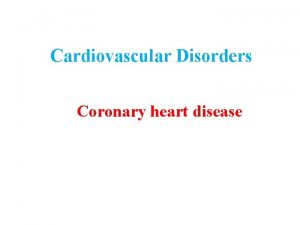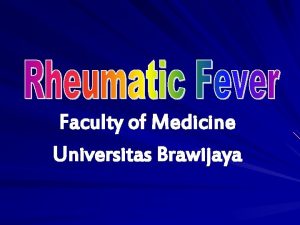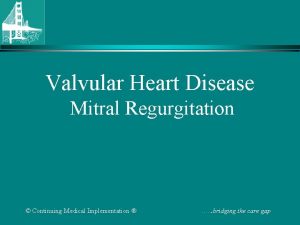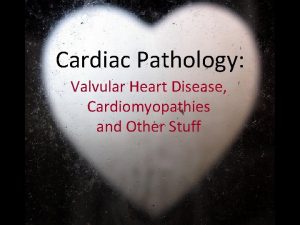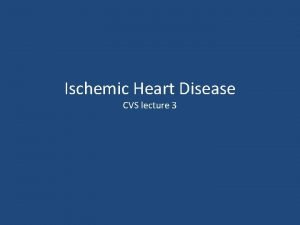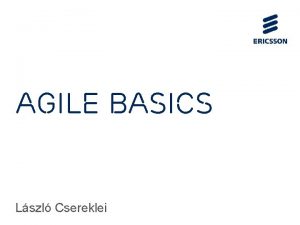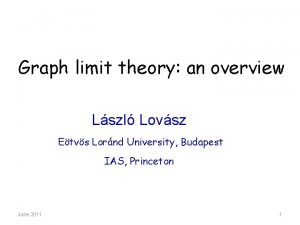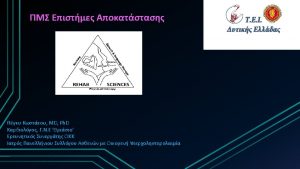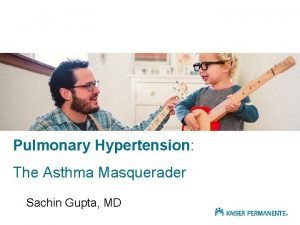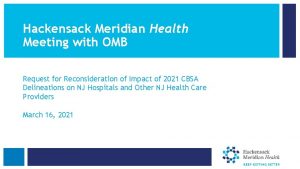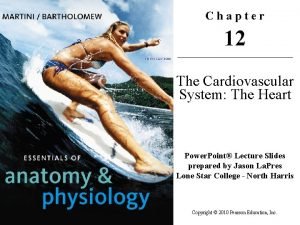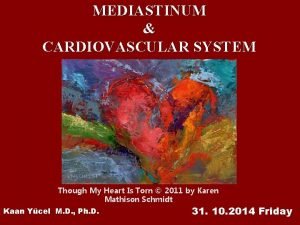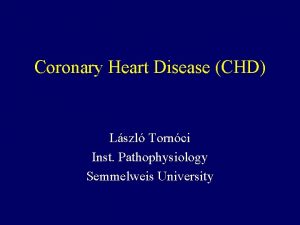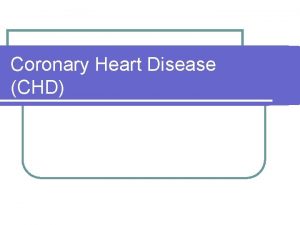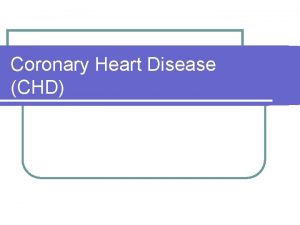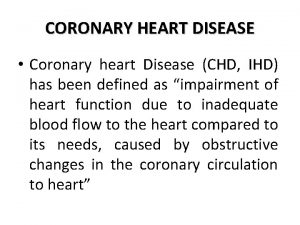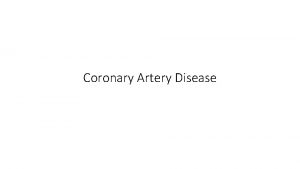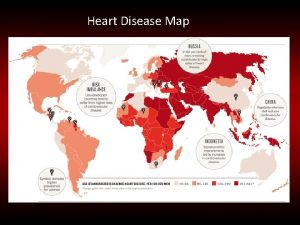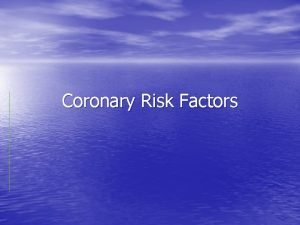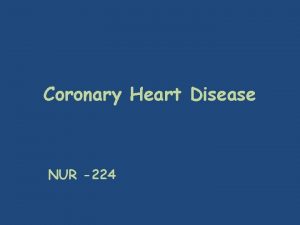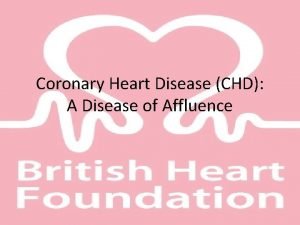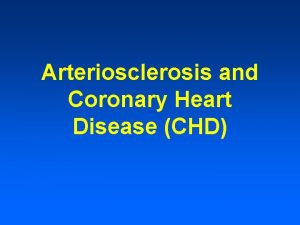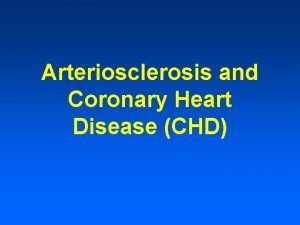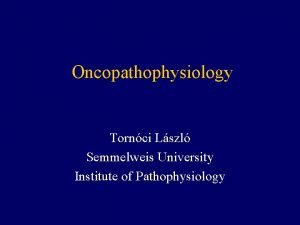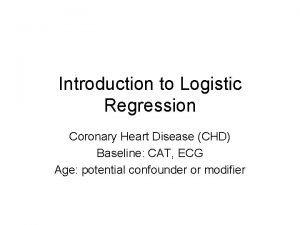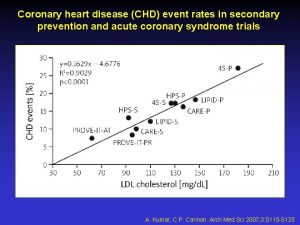Coronary Heart Disease CHD Lszl Tornci Inst Pathophysiology

















- Slides: 17

Coronary Heart Disease (CHD) László Tornóci Inst. Pathophysiology Semmelweis University

Significance CHD causes more deaths and disability than any other disease in the developed countries. CHD like stroke and occlusion of peripheral arteries is a consequence of atherosclerosis.

Natural history Possible symptoms or results: • • • No symptoms Angina pectoris Acute myocardial infarction Chronic heart failure Sudden death

Angina pectoris Severe, dull pain in the chest of limited duration. Usually provoked by physical activity, cold, or a large meal. Pain is relieved by nitrates in the classic type. • Classic vs. Prinzmetal angina • Stable vs. unstable angina

Comparison of angina types Classic angina • Common • Usually stress induced (effort angina) • ECG: ST depression • Responds to nitrates • Caused by coronary occlusion Prinzmetal angina • Rare • Usually occurs at rest (during sleep) • ECG: ST elevation • No response to nitrates • Caused by coronary spasm

Stable vs. unstable angina • Good prognosis • Caused by quiescent plaque • Reproducable pain • Poor prognosis • Caused by ruptured plaque • Pain unusually bad, occurs more frequently or unexpectedly

Acute Myocardial Infarction (AMI) • • • Symptoms Natural history, prognosis ECG signs Complications STEMI vs. NSTEMI infarctions

Vulnerable plaque NEJM: 342: 101 (2000)

Plaque rupture NEJM: 342: 101 (2000)

Acute Coronary Syndrome (ACS) ACS may be: • AMI • unstable angina ACS is suspected: • First angina-like pain ever • Angina in CHD patients, if: – Pain is not relieved by nitrates and/or – Pain is unusually severe

ACS types

Pathophysiology Stable angina NSTEMI UA, STEMI

Diagnosis of AMI • Clinical signs • ECG signs (ST elevation, depression, pathological Q) • Plasma conc. of cardiac troponin T or I

Prevention of CHD • • • Quit smoking Avoid sedentary lifestyle Care of hypertension Care of DM Care of hyperlipidemias

Prevention of AMI in CHD patients All things mentioned in the previous slide • • Use of drugs (aspirin) Check progression of CHD Hospitalize unstable angina cases Surgery, angioplasty, stent if necessary

Therapy of AMI • • • Minimize damage (PTCA, thrombolysis) Control arrhythmias, circulation Look for complications Fight cardiac shock if it develops Assessment of prognosis, rehabilitation Secondary prevention

PTCA Percutaneous Transluminal Coronary Angioplasty Currently the best way to minimize the damage caused by AMI Timing is very important, however
 Coronary artery disease pathophysiology
Coronary artery disease pathophysiology Coronary heart disease
Coronary heart disease Pathophysiology of valvular heart disease
Pathophysiology of valvular heart disease Mitral regurgitation symptoms
Mitral regurgitation symptoms Pathophysiology of valvular heart disease
Pathophysiology of valvular heart disease Pathophysiology of valvular heart disease
Pathophysiology of valvular heart disease Pathophysiology of valvular heart disease
Pathophysiology of valvular heart disease Pathophysiology of ischemic heart disease
Pathophysiology of ischemic heart disease Csereklei david
Csereklei david Lszl charts
Lszl charts Coronary artery disease
Coronary artery disease Certification study guide: certified hvac designer (chd)
Certification study guide: certified hvac designer (chd) Cjanoza
Cjanoza Sachin gupta md
Sachin gupta md Chd meridian healthcare
Chd meridian healthcare Coronary circulation of heart
Coronary circulation of heart Cardiac plexus
Cardiac plexus Crash course heart
Crash course heart
